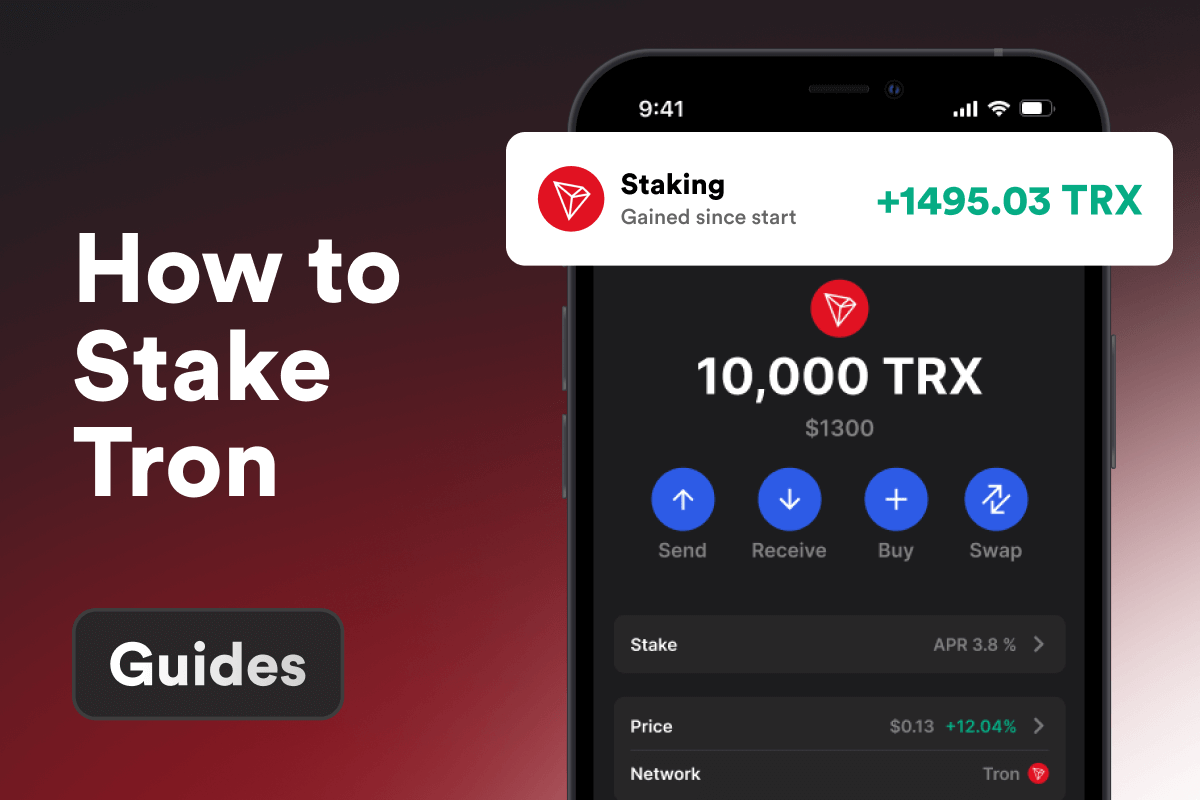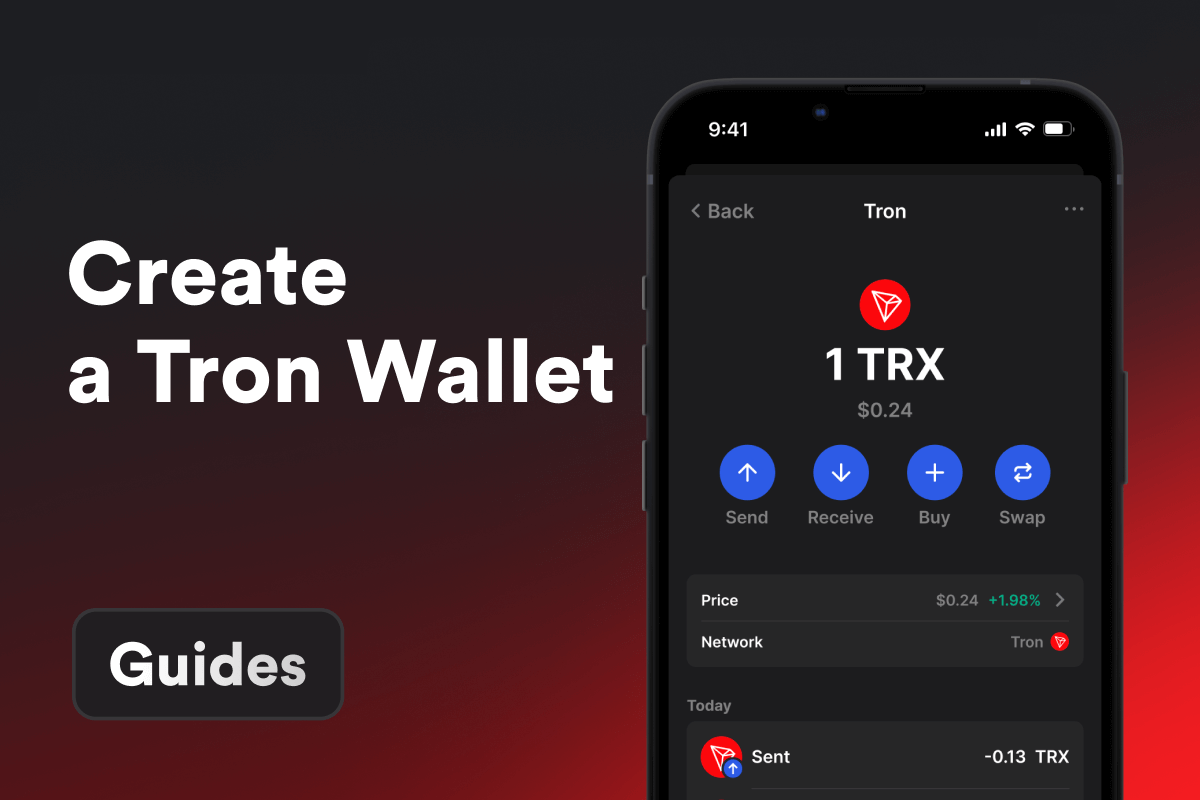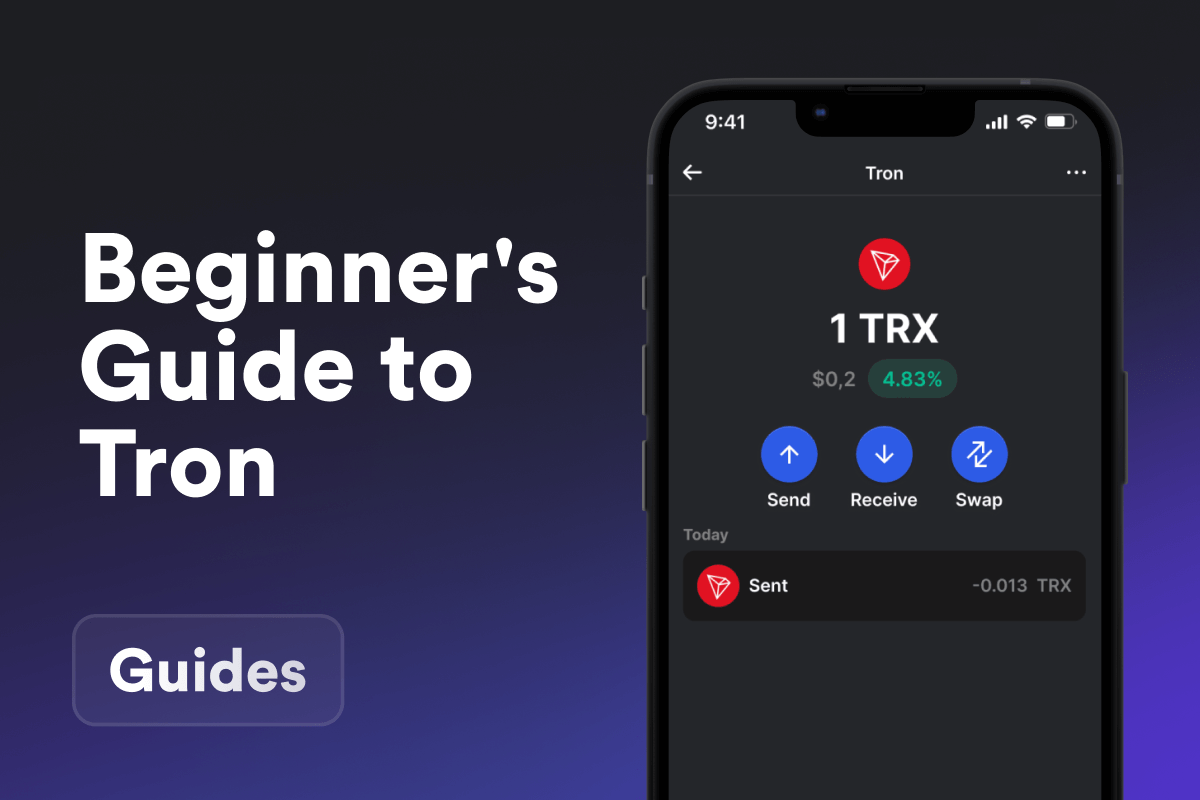
Looking for more than just access to cryptocurrency? TRON is a blockchain where users can not only trade and exchange assets but also actively support the network. In this overview, you’ll learn how staking TRX unlocks new opportunities within the TRON ecosystem.
What Is the TRON Blockchain
TRON is a decentralized, layer-1 blockchain platform created to run high-performance decentralized applications (DApps). Its native token, TRX, serves as the main means of exchange within the ecosystem, allowing users to interact with applications and conduct transactions. One of the key advantages of TRON is its support for USDT TRC20 - a version of the Tether stablecoin that operates on this blockchain. This provides fast and low-cost transfers of stablecoins, making the network attractive to a wide audience. TRON aims to create a global infrastructure for a decentralized internet, giving developers the tools to build scalable and efficient applications.
Advantages of the TRON Network
TRON stands out among other blockchains with unique benefits that make it an important player in the crypto world.
-
Transaction Speed: The network can process up to 2,000 transactions per second. This is highly valued by both regular users and developers of applications with a large number of operations.
-
Low Fees: Fees on TRON are significantly lower than those of its main competitor - Ethereum. While Ethereum remains a more versatile platform, many users are switching to TRON to save on transaction costs.
-
DApps and Smart Contracts: TRON was originally created as a platform for developing complex decentralized applications. Thanks to smart contracts, you can create DApps of any kind: from games and social networks to shops and financial services.
-
Consensus Mechanism: TRON uses Delegated Proof-of-Stake (DPoS), where token holders vote for super representatives (validators) who generate blocks. Elections are held every six hours, ensuring the network’s dynamism and decentralization.
-
USDT TRC20 Support: One of the key advantages of TRON is its support for USDT TRC20, a version of the Tether stablecoin that operates on this blockchain platform. Thanks to the integration of USDT into TRON, users can send and receive the stablecoin with minimal delays and almost no fees, making the network especially attractive for international transfers and regular payments. This feature also appeals to large retail users who value USDT’s stability and the low transaction costs offered by TRON.
Key Resources: Bandwidth and Energy in TRON
There are two main resources in the TRON network that support network operations and transactions: Bandwidth and Energy.
What is Bandwidth in TRON?
Bandwidth is used for standard actions, such as transferring TRX between wallets. Each user receives a small amount of bandwidth for free every day. If you don’t make many transactions, this amount is usually enough. However, if you run out of bandwidth, the system may deduct a small amount of TRX to cover the transaction fee.
What is Energy in TRON?
Energy is needed for running smart contracts and interacting with TRC20 tokens (like USDT TRC20). Energy is valued more highly because it is used up faster with smart contracts. To get more energy, users can stake their TRX and choose to receive energy as a reward.
Managing Resources and Choosing Rewards:
-
Selecting a resource in staking: When you stake TRX, you can choose which resource you want to receive - bandwidth or energy. You can’t receive both resources at the same time.
-
Which is more beneficial to receive? If you frequently send TRC20 tokens or use decentralized applications, it’s better to choose energy since it’s required for these actions and tends to be more valuable. Energy helps you avoid extra fees when using smart contracts.
Important Points to Remember:
-
If you don’t have enough energy or bandwidth for a transaction, the system will automatically deduct the needed amount of TRX to complete it.
-
By managing your resources through staking TRX, you can save significantly on fees and make your transactions more cost-effective.
What Is Staking
Staking is a way to earn cryptocurrency by “locking up” your coins to support the operation of the blockchain. In return, the network rewards you with additional coins, similar to earning interest on a bank deposit. The more coins you stake, the higher your reward will be. This process helps ensure the security and stability of the network.
 The growth of TRX staking over time, reflecting the transition from Stake 1.0 to Stake 2.0. Source: tronscan.org
The growth of TRX staking over time, reflecting the transition from Stake 1.0 to Stake 2.0. Source: tronscan.org
Who Are Super Representatives in the TRON Network?
Validators are participants in a blockchain who verify transactions, create new blocks, and maintain the network’s security. In the TRON network, validators are called Super Representatives - selected nodes voted in by TRX holders. TRON has 27 active Super Representatives who regularly confirm transactions and earn rewards for their work. Elections for Super Representatives take place every six hours, allowing decentralized governance that reflects the community’s preferences. Super Representatives play a key role, as the network’s stability and security depend on their reliability and activity.
Top 7 Reasons Why You Should Stake TRON (TRX)
Staking TRX offers many benefits, from passive income to participating in network governance. By staking your TRX tokens, you not only increase your capital but also contribute to the growth and decentralization of the TRON ecosystem. Let’s explore 7 reasons why staking TRX is a great opportunity you shouldn’t miss.
Security of Your Assets When Staking Tron
The level of security remains the same whether you stake your TRX tokens or simply store them in a wallet. The main components of this reliability are the TRON blockchain and your wallet. It’s important to choose a secure wallet, such as Gem Wallet, which doesn’t have access to your private keys. This ensures that the level of security when staking is as high as when storing assets in your account. Additionally, the TRON blockchain itself, along with its network of super representatives (Super Representatives), plays a vital role in maintaining the integrity and security of your staked assets. Super representatives validate transactions and ensure the smooth operation of the network, providing an extra layer of protection for your staked TRX tokens.
Participate in Transaction Validation by Staking TRX
The TRON blockchain’s performance and efficiency are powered by the Delegated Proof-of-Stake (DPoS) consensus mechanism. Unlike the resource-heavy Proof-of-Work (PoW), DPoS relies on community voting. By staking their TRX tokens, holders receive TRON Power (TP), which grants them voting rights in the network. TRON Power is used to elect Super Representatives (SRs) who validate transactions and create new blocks, ensuring the network’s decentralization and security.
This model greatly speeds up transaction confirmation and reduces energy consumption, addressing key issues found in traditional consensus methods. Thus, staking TRX not only supports network security and decentralization but also provides users with passive income.
Keep Tron Safe: Stake TRX and Contribute to Network Security
TRX stakers prevent risks associated with a 51% attack, where someone could gain control over most of the network. Thanks to a well-thought-out staking system, the network becomes more reliable and secure, reducing hacking risks. By staking TRX, you not only earn but also support the stability and security of TRON, creating a safe space for all users.
Staking TRX as a Way to Access Bandwidth and Energy Resources
In the TRON network, gaining access to Bandwidth and Energy is closely tied to staking.
-
Bandwidth: By staking TRX, users receive Bandwidth, which allows them to make free transactions each day. This lowers the cost of simple transfers and makes the TRON network attractive for frequent operations.
-
Energy: Energy, needed for running smart contracts, is also generated by staking TRX. This enables users to execute contracts without constantly paying fees.
Thus, staking TRX is not only a way to earn rewards but also an effective way to reduce costs when using the network, giving access to TRON’s resources for more operations.
 Key Resources: Bandwidth and Energy in TRON.
Key Resources: Bandwidth and Energy in TRON.
Keep TRX Steady by Staking
Staking TRON helps maintain the token’s price stability, making investments more reliable. TRX involved in staking is locked for a certain period, reducing its availability for trading. This decreases the number of tokens on the market and helps preserve the stability of the TRX exchange rate.
Protection From Inflation by Staking TRX
Staking also provides protection from inflation for your assets. When new coins are issued, inflation can occur, reducing the value of tokens held by users. Currently, TRON’s annual inflation rate is around -2.4%, meaning that the total supply of TRX actually decreases slightly each year. By staking, you not only earn rewards that help preserve the value of your holdings, but also benefit from TRON’s deflationary model, which further supports the stability and potential growth of your assets over time. In this way, staking offers an effective means to protect your assets from devaluation.
Participate in Managing the TRON Ecosystem
TRX stakers gain voting rights in TRON network governance, allowing you to participate in making important decisions. You can vote on proposals and changes concerning network development - such as adding new features, improving platform performance, and modifying governance rules. By voting, you help the network evolve and ensure the protection of your assets by supporting beneficial initiatives and blocking those that could harm TRON.
How to Start Staking TRX
Staking TRX is a simple and rewarding way to earn passive income while contributing to the security and efficiency of the TRON blockchain. Whether you’re an experienced crypto enthusiast or just beginning your journey, staking provides an excellent opportunity to maximize the potential of your TRX.
Here’s a step-by-step guide to help you get started with staking TRX:
Setting Up a TRX Wallet
First, install a wallet that supports TRX. Gem Wallet is a self-custody, open-source solution that ensures the security and privacy of your assets. It supports both TRX and TRC20 standard tokens, making it an excellent choice for managing your funds.
Acquire TRX Tokens
You’ll need TRX tokens. You can get them from friends, transfer them from an exchange, or purchase them directly in the wallet using a credit card. This is a quick and convenient way to obtain TRX for transactions like payments using USDT TRC20.
How to Stake TRON
In your wallet, select the staking function and follow simple instructions: specify the number of tokens to stake and choose a super representative from the list. For a detailed guide, you can visit: How to Stake TRX


